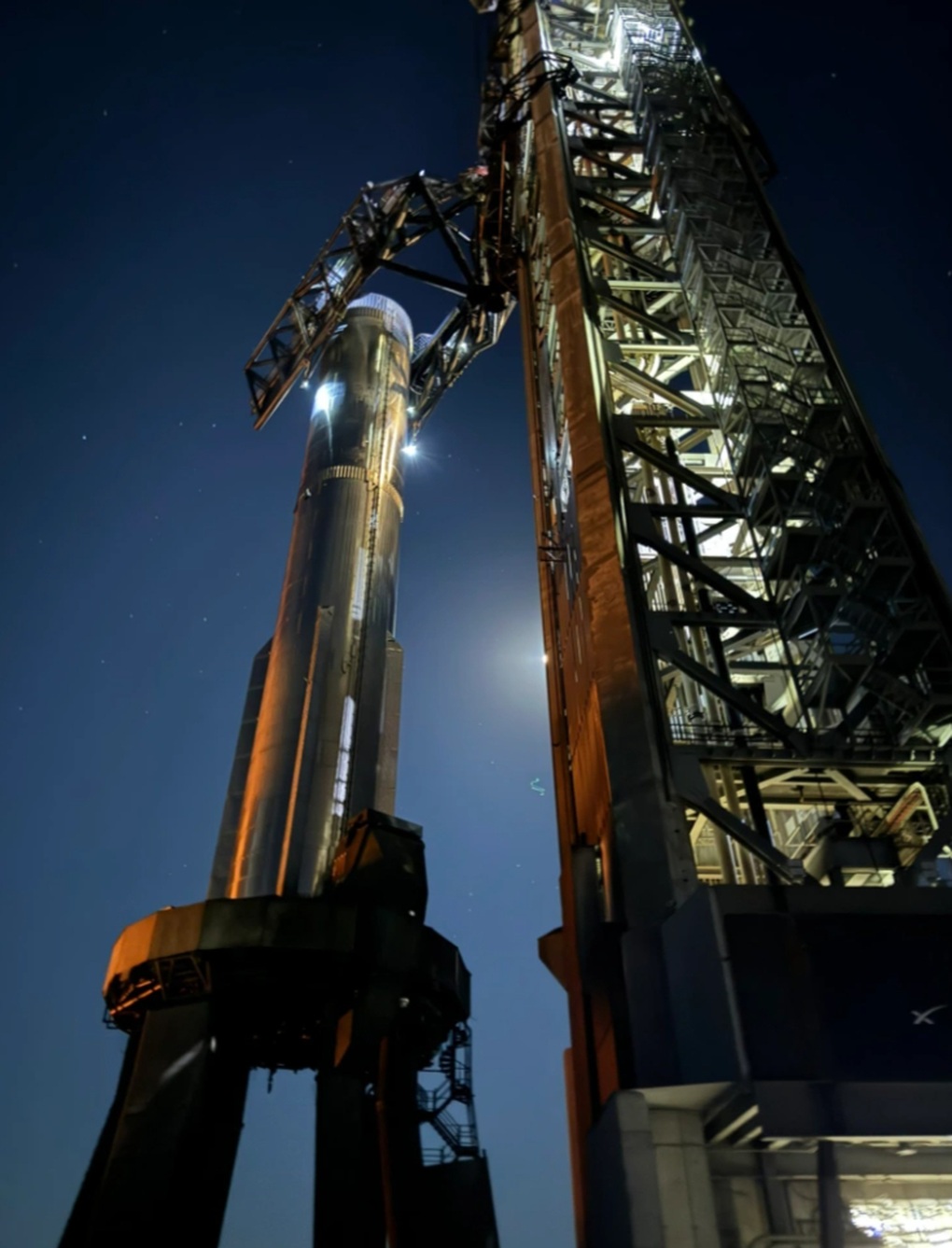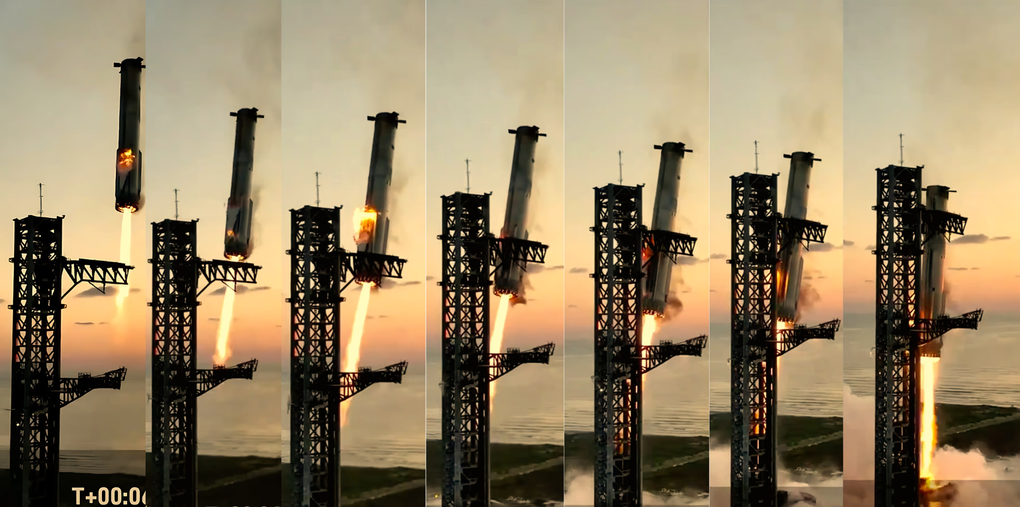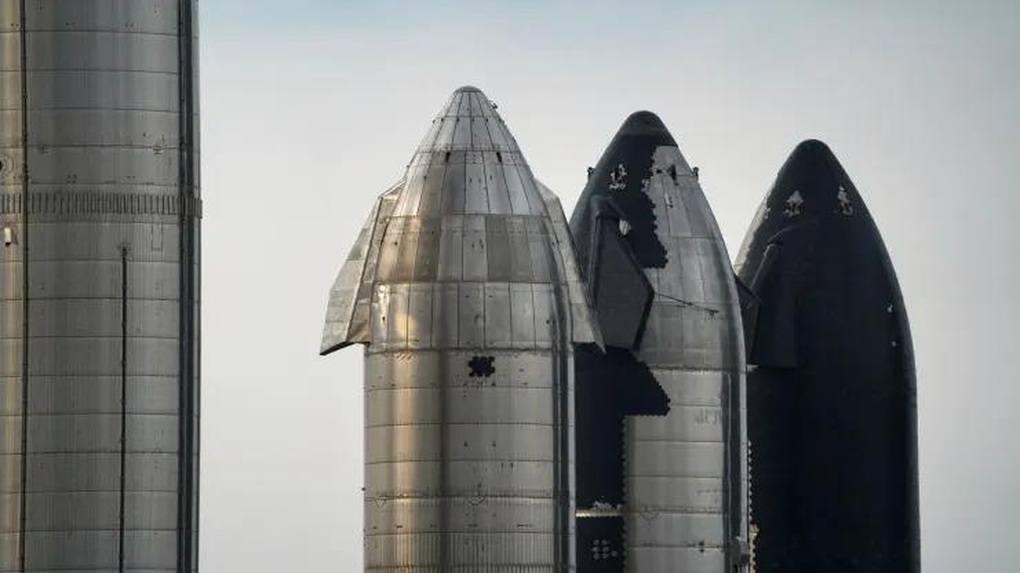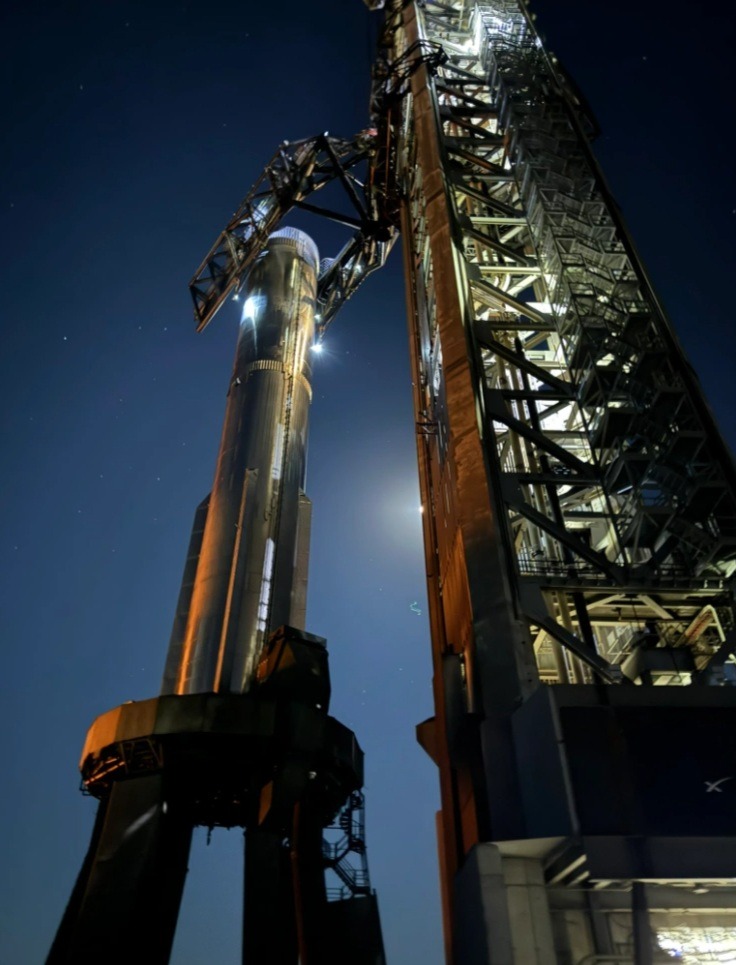Before achieving absolute precision with the Mechazilla arm system, SpaceX was very successful in landing its rockets for reuse.
Full view of SpaceX “catching” a 250-ton rocket with a robotic arm (Video: SpaceX).
On the evening of October 13 (Vietnam time), SpaceX launched the 122-meter-tall Starship rocket for the 5th time, and successfully recovered the Super Heavy booster stage at the launch pad with almost absolute precision in every step of the journey.
To reach this level, SpaceX needed the powerful help of the Mechazilla robotic arm.
This is a robotic arm system mounted on the launch tower, designed with only one purpose: to grab the Super Heavy booster as it returns to Earth after its journey.
But why does SpaceX need this somewhat risky method?
According to Elon Musk, founder of SpaceX, the booster stage of the Super Heavy rocket, as its name suggests, weighs a lot, up to 250 tons.
Therefore, the consequences would be catastrophic if it landed normally, or hit any other part.

“You have something that weighs a few hundred tons, and it’s going down at the speed of sound,” Elon Musk said. “Our job is to make it lighter over time.”
With that idea, Elon Musk asked experts to remove the tower’s legs, leaving only a robotic arm, whose task is to slow down the speed and “catch” the rocket’s booster.
This process requires a perfect combination of mechanical and sensor systems, between the rocket booster and the Mechazilla arm.
Specifically at the pedestal, modern sensors and real-time control systems allow for precise calculation of the position and speed of the thruster stage.
The robotic arm is the main component, which will reach out and catch the rocket in mid-air, avoiding it from colliding with the ground and the launch pad structure, thereby minimizing the risk of damage.
Meanwhile, in the rocket booster stage, the auxiliary engines operate at full capacity with the task of navigating and balancing the weight of the entire system.
As the descent progresses, the engine gradually reduces thrust, bringing the rocket stage between the arms. At that point, the arms extend to receive the booster, then quickly close when it reaches the required position, and finally lock onto the side.
 The Super Heavy rocket booster from the moment it begins to land, until it completes the “sheathing the sword” stage (Photo: SpaceX).
The Super Heavy rocket booster from the moment it begins to land, until it completes the “sheathing the sword” stage (Photo: SpaceX).
It should be added that, before achieving absolute precision with the Mechazilla arm system, SpaceX was very successful in landing its Falcon 9 rockets for reuse.
Bill Gerstenmaier, SpaceX Vice President, once said that the company’s rocket landing system at sea is almost absolutely accurate, with a deviation of only about 0.5 cm.
This is the driving force that has helped SpaceX continue to bring more improvements to its rocket landing technology, and the Mechazilla system was born from that.
According to experts, Mechazilla technology is not just a simple landing system, but has created a major breakthrough in the ability to reuse rockets.
The key point is that the upper stage of the rocket, because it is fixed in mid-air, can be quickly maintained, and reused in a short time.

With a series of landmark breakthroughs, SpaceX is bringing the dream of humans setting foot on Mars closer and closer (Photo: Getty).
This reduces operating costs and speeds up preparation between missions. Additionally, by avoiding direct landings on flat surfaces or the sea, component durability is also improved.
Not only SpaceX benefits from this groundbreaking technology, but even NASA has paid special attention to the event.
That’s because the Starship spacecraft system and Super Heavy rocket will be used to launch NASA’s future Artemis missions, including the Artemis Phase 3 mission, which will return humans to the Moon in 2026.
Experts also believe that SpaceX’s system is creating a solid foundation for space exploration missions to Mars and beyond.






